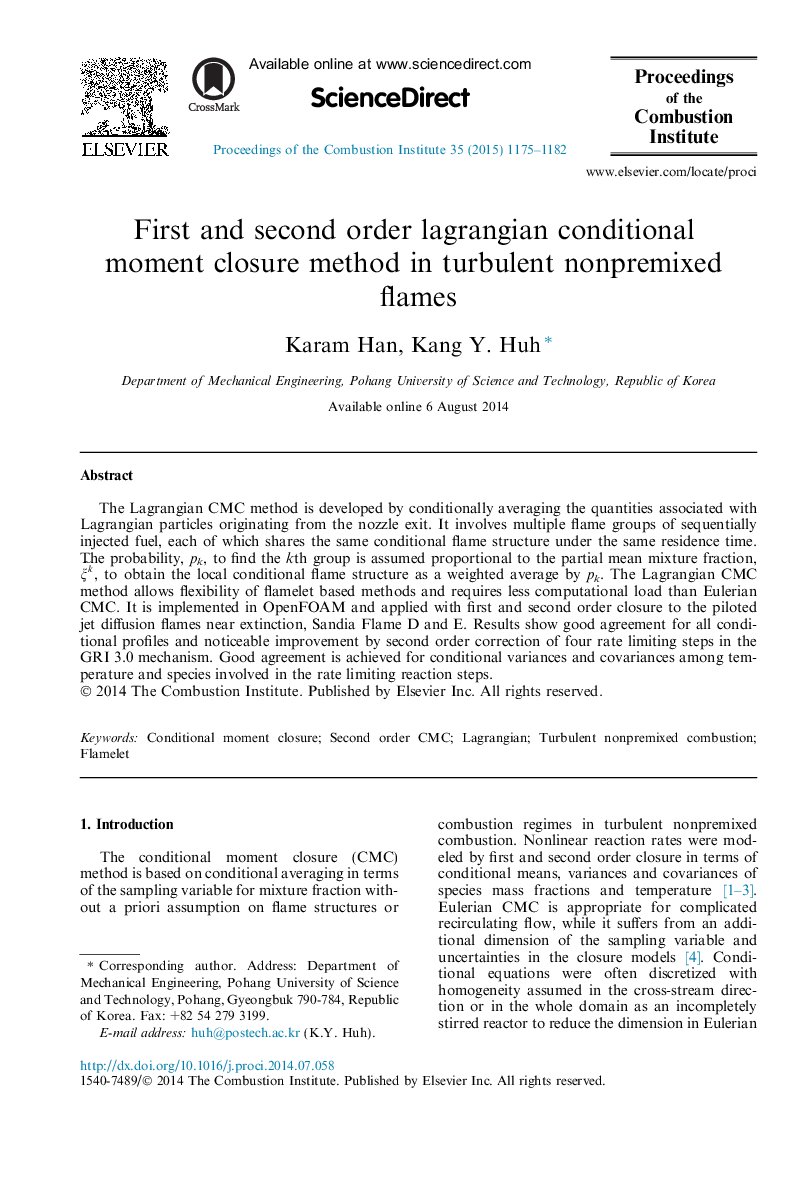| Article ID | Journal | Published Year | Pages | File Type |
|---|---|---|---|---|
| 6679193 | Proceedings of the Combustion Institute | 2015 | 8 Pages |
Abstract
The Lagrangian CMC method is developed by conditionally averaging the quantities associated with Lagrangian particles originating from the nozzle exit. It involves multiple flame groups of sequentially injected fuel, each of which shares the same conditional flame structure under the same residence time. The probability, pk, to find the kth group is assumed proportional to the partial mean mixture fraction, ξkâ¼, to obtain the local conditional flame structure as a weighted average by pk. The Lagrangian CMC method allows flexibility of flamelet based methods and requires less computational load than Eulerian CMC. It is implemented in OpenFOAM and applied with first and second order closure to the piloted jet diffusion flames near extinction, Sandia Flame D and E. Results show good agreement for all conditional profiles and noticeable improvement by second order correction of four rate limiting steps in the GRI 3.0 mechanism. Good agreement is achieved for conditional variances and covariances among temperature and species involved in the rate limiting reaction steps.
Related Topics
Physical Sciences and Engineering
Chemical Engineering
Chemical Engineering (General)
Authors
Karam Han, Kang Y. Huh,
